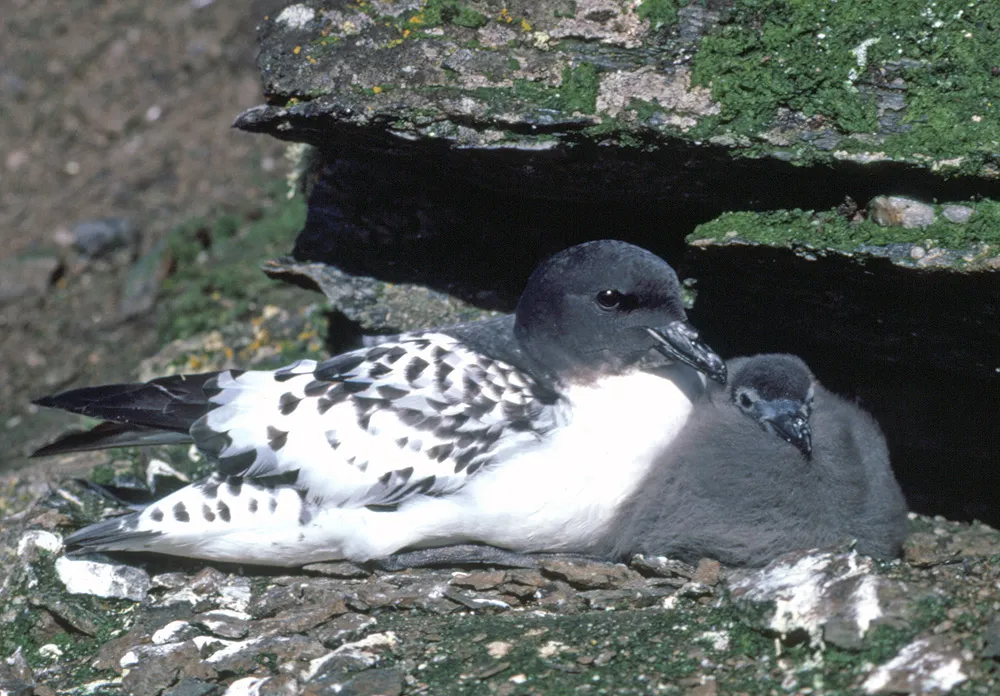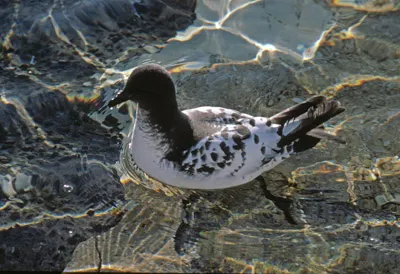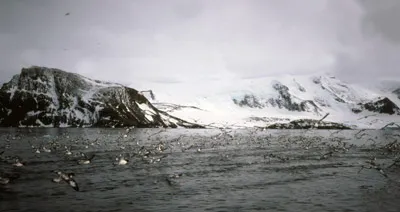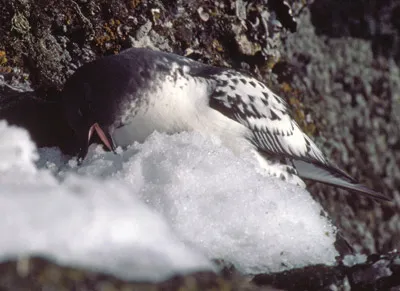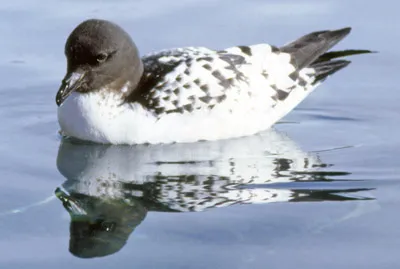Cape Petrels / Cape Pigeon / Pintado
Daption
capense
cape Petrel Basics
Weight: average 430 g
Length: 39 cm, wingspan: 86
cm
Breeding Season: Nests are made
in November consisting of scrapes and piles of stones under
protective rock ledges or rocky crevices in colonies on
rocky cliffs and slopes usually within a kilometer of the
ocean. The chicks fledge in March.
Estimated
world population: - 2,000,000.
Feeding
& diet: The usual Antarctic sea food of largely
krill supplemented with fish, squid, carrion and refuse
from ships where available. Usually they feed on the surface
though shallow dives are also undertaken.
Conservation status: Least concern.
Distribution: Circumpolar, during the
breeding season they are found around the coasts of Antarctica
and sub-Antarctic islands, in the winter months they fly
north as far as the equator.
What are Cape Petrels like?
This is a Cape pigeon or Pintado a pigeon sized petrel
common around sub Antarctic islands and peninsula.
They nest on rocky ledges and usually rear a single chick which
looks particularly shape-less until it fledges. It used to remind
me of a fluffy ball with a head just stuck on the front.
The birds tend to feed in flocks on krill and small fish
but also will scavenge on scraps discarded by skuas and giant
petrels when feasting on floating seal carcasses.

